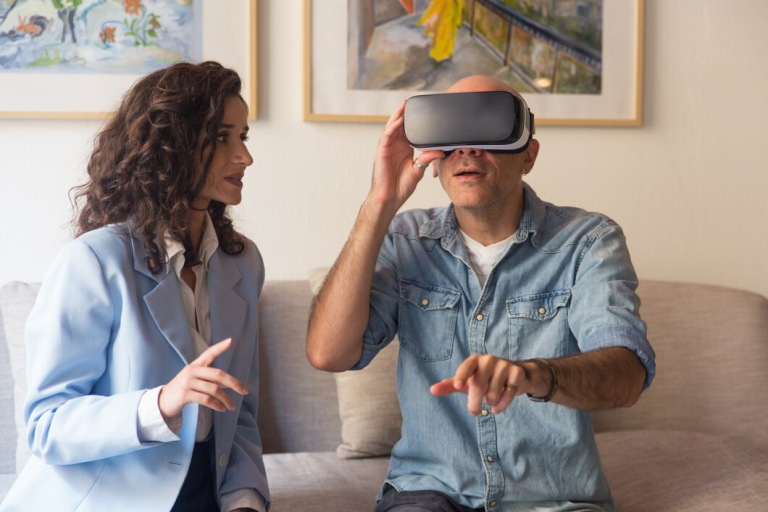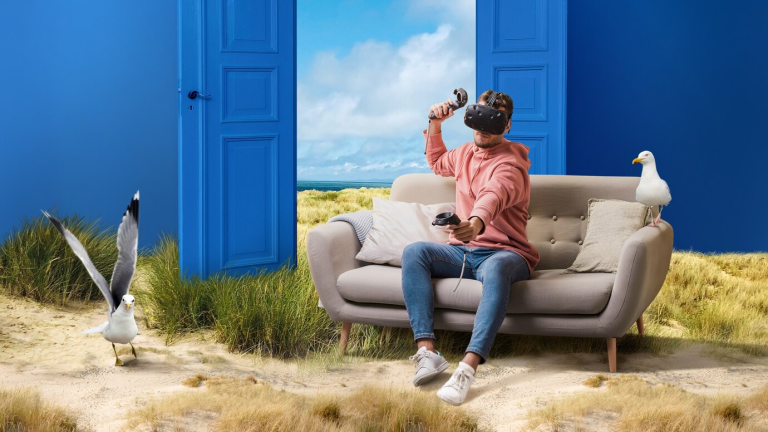Design errors and revisions can be a significant bottleneck in architecture and construction projects, leading to increased costs, delayed timelines, and frustrated clients. Enter Virtual Reality (VR)—a transformative tool that is revolutionizing the way architects and designers conceptualize, communicate, and execute projects. By enabling immersive, interactive experiences, VR is drastically reducing design errors and minimizing the need for revisions.
Here’s a comprehensive look at how VR is reshaping the design process and ensuring smoother project execution.
1. Immersive Visualization: Bringing Designs to Life
Traditional blueprints and 2D renderings often fail to convey the true essence of a design, leading to misunderstandings between architects and clients. VR eliminates this gap by creating lifelike 3D environments that allow stakeholders to explore every detail of the project.
Why It Matters:
- Clients can virtually walk through their spaces, understanding layout, scale, and aesthetics.
- Designers can identify potential issues early, such as awkward layouts or inefficient use of space.
Stat: Projects incorporating VR report a 40% reduction in design-related misunderstandings, leading to faster approvals and fewer revisions.
Example:
In a recent residential project, VR revealed that the planned kitchen layout lacked sufficient counter space. The design team adjusted the layout in real-time, saving weeks of potential delays during construction.
2. Real-Time Feedback and Collaboration
Communication between clients, architects, and other stakeholders is often where design errors originate. VR facilitates real-time collaboration, allowing all parties to engage with the design and provide immediate feedback.
Why It Matters:
- Clients feel more involved and confident in the process.
- Architects can address concerns on the spot, avoiding costly post-construction changes.
Pro Tip: Use VR to present multiple design options, allowing clients to compare and select their preferred layout with ease.
3. Streamlined Design Reviews
The traditional design review process can be slow and prone to misinterpretation. VR transforms reviews into interactive sessions where stakeholders can visualize the project in its entirety, speeding up decision-making.
How VR Helps:
- Eliminates ambiguity by showcasing designs in a virtual 1:1 scale.
- Allows teams to simulate different scenarios, such as lighting changes or furniture arrangements, in real time.
Stat: Design review times are reduced by up to 30% when VR is used, according to industry reports.
4. Reducing Construction Errors
Mistakes made during the construction phase are often a result of unclear designs or overlooked details. VR bridges the gap between design intent and execution by providing contractors with a detailed, immersive understanding of the project.
Key Benefits:
- Contractors can visualize complex elements, such as structural components or custom features, before breaking ground.
- Fewer on-site modifications mean lower costs and shorter timelines.
Example:
In a commercial office project, VR simulations helped contractors identify a potential clash between HVAC systems and structural beams, allowing for adjustments before construction began.
5. Cost and Time Efficiency
Every revision comes with a price tag, whether it’s redoing design drawings or making mid-construction changes. VR minimizes these costs by ensuring that designs are thoroughly vetted and approved in the early stages.
Why It Matters:
- Saves on material waste by catching errors before construction.
- Reduces overall project timelines by avoiding delays caused by revisions.
Stat: VR can reduce project costs by 15-20% by preventing errors and revisions.
6. Enhancing Client Confidence
One of the most overlooked benefits of VR is the confidence it instills in clients. By experiencing their future space in VR, clients are less likely to request changes later, as they have already approved the design with a full understanding of its look and feel.
Why It Matters:
- Builds trust between clients and architects.
- Leads to smoother project execution with fewer last-minute surprises.
7. Training and Simulation for Construction Teams
VR isn’t just for clients and architects; it’s also a valuable tool for construction teams. By simulating the construction process in VR, teams can anticipate challenges and refine their approach before stepping onto the site.
Key Benefits:
- Reduces risks associated with complex builds.
- Improves efficiency by allowing workers to “practice” before executing critical tasks.
Example:
A multi-story commercial project used VR to train contractors on the sequencing of structural installations, leading to a 10% improvement in construction efficiency.
Why VR is the Future of Design and Construction
The ability to foresee and prevent errors before they occur is invaluable in any design process. By integrating VR, architects and designers can:
- Save time and money.
- Deliver higher-quality results.
- Enhance collaboration and client satisfaction.
Fact: By 2030, the global market for VR in architecture and construction is projected to exceed $10 billion, highlighting its growing importance in the industry.
Why Choose VRchitects for Your VR Design Needs?
At VRchitects, we specialize in using Virtual Reality to revolutionize the design process. With our cutting-edge tools and expertise, you can:
- Experience your project in immersive detail before construction begins.
- Make real-time adjustments to eliminate design flaws.
- Save time and money with reduced errors and revisions.
Ready to streamline your next project? Contact VRchitects today and discover the power of VR in design.






